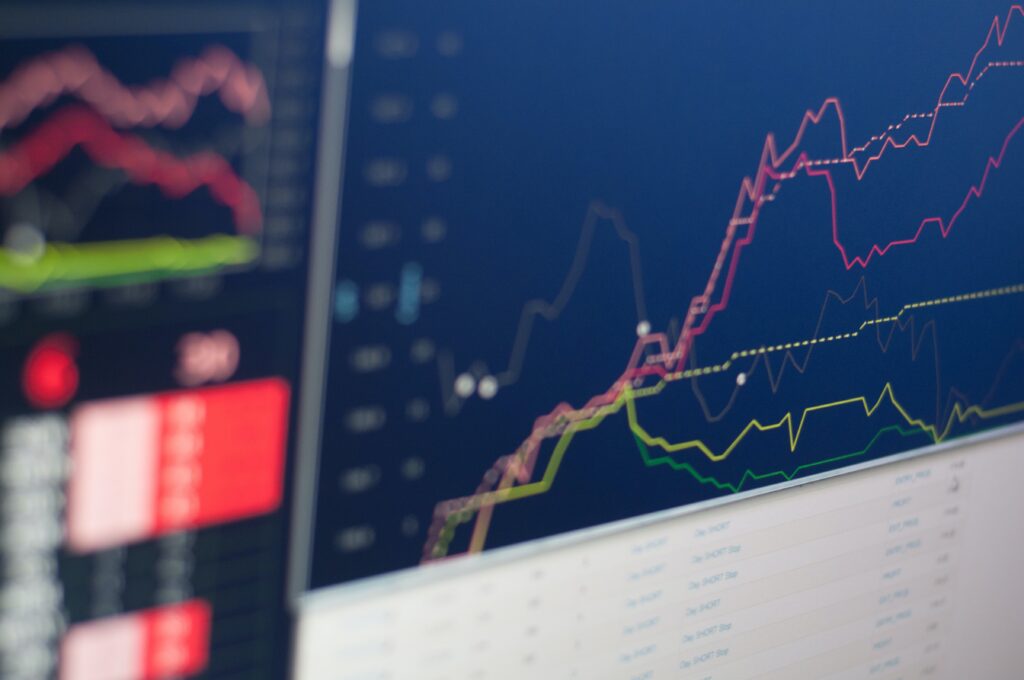Forex trading is one of the most famous ways of getting cash. It includes trading various monetary standards to create a gain. However, understanding its ideas and terminology can be challenging. This guide will help you begin forex trading by making sense of all that you want about this industry.
Source: Unsplash
Table of Contents
Understanding the Basics of Forex Trading
Forex represents the foreign exchange market and refers to the financial market where currency forms are exchanged against one another. It is additionally alluded to as FX or money market since it exchanges currencies as opposed to stocks or securities (exchanged securities exchanges). Forex exchanging allows financial backers overall access to global ventures without visiting an office or bank office in another country. It also allows you to exchange with any cash pair, like USD/EUR or USD/CAD, among many others.
Essential Tools for Forex Trading
You’ve probably heard the phrase “the right tools for the job,” but what does that mean? Well, in this case, it means that if you want to be successful at forex trading, you will need these essential tools:
Trading Platform: A trading platform is a software application that traders use to place orders, view charts, and analyze the market. It will match your trading style and bring you advantages if you choose it wisely.
Economic Calendar: This schedule gives data about forthcoming financial occasions, for example, Gross domestic product discharges, financing cost choices, and reports about business. You can use it to design your exchanges around critical market-moving situations.
Risk Management Tools: Forex trading involves a high level of risk, and you should manage risk carefully. Tools like stop-loss orders and position size calculators are essential for risk management and your decision-making.
Trading Journal: A trading journal records your exchanges, including passage and leave focuses, exchange size, benefit and misfortune. This diary assists you with keeping tabs on your development, recognizing regions for development, and fostering more compelling exchanging methodologies.
Developing a Forex Trading Strategy
A successful forex trading strategy will help you have win-win deals without much effort. To make it better, follow these tips:
Know the trading goals and reactions to risk: Once you know your trading goals and upcoming risks, you can determine how to make it successful. You’ll manage it only after market research and strategic use of risk management tools.
Choose a trading style: There are three types of trading nowadays: day trading, position trading, and swing trading. You will know your trading type depending on your goals and risk tolerance.
Identify the markets you want to trade: You can trade a single currency or multiple pairs. Identify the markets you want to trade based on your goals and knowledge.
Analyze the market: Forex traders usually assess the market situation, try to predict wins, and make more informed trading decisions.
Create your trading plan: You can’t start trading without an extensive plan. Based on predictions and risks, plan your future trading actions to avoid losses.
Backtest your trading plan: The historical market data needs quality backtesting to evaluate its success. Make it as often as you can and monitor your strategy.
How to Get Started Without Capital?
This is a great question asked by consumers who want to start trading without money but with the ability to predict the market’s behavior. A good start will be opening a trading account with a broker that could help you manage your money.
Shania Brenson, the CEO and financial expert at 15Mfinance.com, says, “Trading is an antinomy because sometimes, to win money, you need capital. It is how businesses work. More than that, you could borrow loans for trading and cover them after you win.”
You could try spot trading (buying and selling individual assets on the same day you got them) or futures trading (buying and selling contracts representing future assets). The main advantage of spot trading is that you can see your profit or loss immediately after completing a transaction. At the same time, the future requires some planning. However, they offer greater profitability potential in the long term.
Practice Trading with a Demo Account
A demo account is where you’ll practice exchanging without fear of losing your cash. Brokers offer it to mimic the genuine exchanging environment on the market. With an open app, you’ll use it on your portable workstation or smartphone. You can begin exchanging with a demo account by using it to undertake diverse methodologies and see how they work within the showcase.
Download the app from Google Play or Apple Store, register, and yield your mail address. You’ll begin exchanging from your demo account and progress your exchanging skills. But if you do not need to form it from your phone, exchanging brokers can give a prepared demo account.
Conclusion
Forex trading looks like a simple concept, and you should think about it like a game you play with your family and friends after a long day. However, you should consider many crucial factors and risks we mentioned above. It means the more you practice, the better you’ll get at the game.
Consider researching different strategies and try them every time you seem worthy. Remember that even if you don’t have enough experience, it doesn’t mean you can’t win big!
The post Understanding the Basics of Forex Trading: A Beginner’s Guide appeared first on Top Entrepreneurs Podcast | Enterprise Podcast Network.

